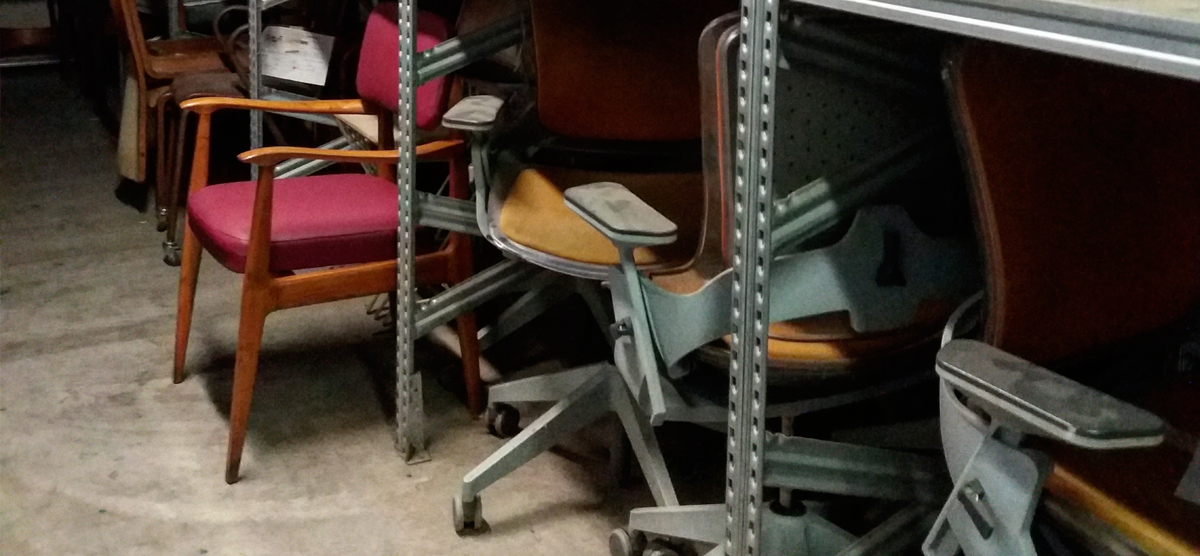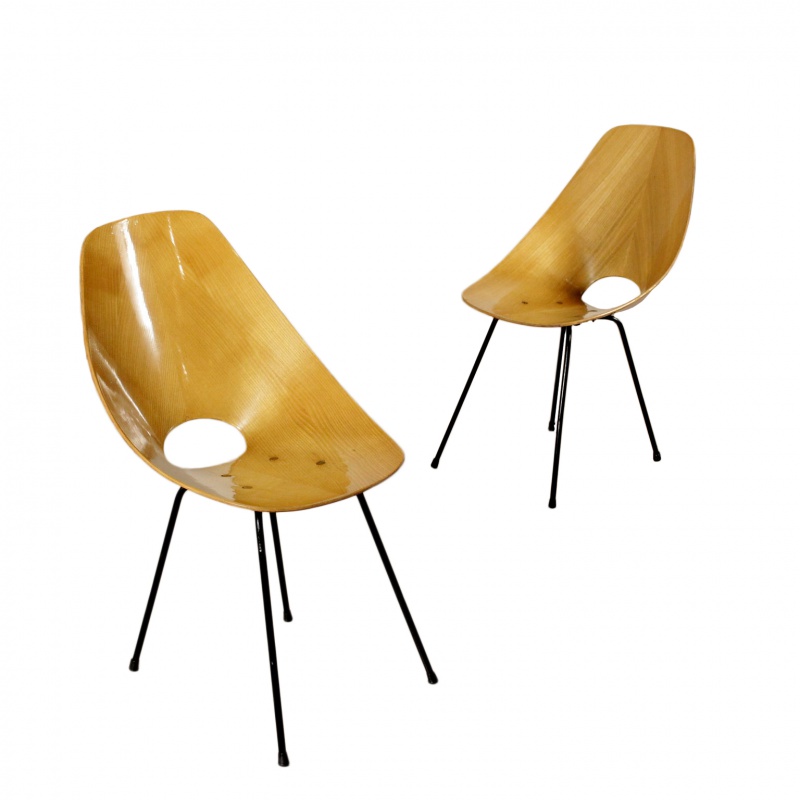
In addition to the pyramids and hieroglyphs, the ancient Egyptians also left us chairs as an inheritance.
The first examples of what we might call the ancestors of the modern chair were indeed found in Egypt, at some tombs in the Valley of the Kings.
Of course, these were not meant for everyone, but only for the pharaoh and figures of the highest rank, as they symbolized authority and prestige.
Other examples of chairs can be found in monumental depictions from Nineveh, the ancient capital of Assyria, and on the Parthenon in Athens, where Zeus is shown reclining on a square chair.

In ancient Rome, the so-called Sella Curulis was popular, a folding seat in the shape of an “X” that symbolized judicial power. Both during the Republic and the Empire, using this type of chair was a privilege reserved only for high public offices like praetors and consuls.
The Gestatorial Chair, a mobile throne on which the pope was carried on the shoulders during public ceremonies, dates back to the Christian era.
During the Middle Ages, chairs were reserved for kings, aristocrats, and high-ranking clergy, while the common people had to settle for very uncomfortable benches.
In churches, chairs could be imposing and finely carved, as evidenced by the ivory chair of Maximian, Archbishop of Ravenna, preserved in the city’s archiepiscopal museum. One of the first single-person seats was the faldistorium, used as early as 1100.
Those not part of any elite used the bench. Built to accommodate several people, it forced them to sit upright and uncomfortably. In Renaissance Tuscany, the “Panca a dossale” rested on fluted bracket feet and had a backrest made of a series of elegant Ionic columns or turned balusters.
In France, it was called a “Banc” and was a very massive rustic piece of furniture placed in front of the fireplace, where it was never moved, even during meals: the dining table was brought close to it.
The first true chair appeared in Europe in the early 1400s
Characterized by four crossed legs, an engraved backrest, and a base for the seat, it was a mix between the Sella Curulis and the Arabic camp chair.
Built with a series of scissor slats mounted on pins, they had a backrest made from a horizontal board with a shaped outline to insert the slats. In the Florentine convent of San Marco, it is still possible to admire examples of this type of chair, used by the friar Savonarola (from whom they take their name).
A rapid evolution began during the Renaissance, when the chair quickly became a widely used piece of furniture, even among the less affluent members of the population.
In modern times, aided by the Industrial Revolution, the chair transformed into a design object, being produced in an endless variety of models, made with various materials and differing qualities.
Undoubtedly, some chairs have made history, becoming true style icons of the 20th century.
We were lucky enough to have several pass through our warehouses; in the gallery below are some of the most beautiful ones.
There are various types of chairs, some quite different from each other.
We are presenting the most well-known and common ones, as listed on Wikipedia.

Rocking chair: This is a particular type of chair, traditionally considered an invention of Benjamin Franklin, distinguished by its ability to “rock” (i.e., oscillate). The base, made of two arcs, allows for a moderate rotation, enabling the user to rock by pushing down with their feet and letting go periodically. The principle that prevents the chair from tipping over is that the center of gravity aligns with the center of the arcs. This type of chair is often considered the prerogative of the elderly head of the household.
Cantilever chair: Also known as a cantilever or suspension chair, it has only two supports at the floor level and at the seat level, connected horizontally by a continuous tube. This special form was designed by Dutch architect Mart Stam in 1926, presented in 1927 at the Werkbund Die Wohnung exhibition for the Weissenhof in Stuttgart, and produced by the German company Thonet. This model is considered an important example of 20th-century design.
Gestatorial chair: This was a mobile throne on which the Pope was carried on the shoulders to be more easily seen by the faithful during public ceremonies. It consisted of a large armchair fixed to a base with rings and removable sidebars, which allowed twelve dignitaries, called pontifical bearers, to carry the throne on their shoulders.
Various gestatorial chairs were in use, some smaller, used for less solemn celebrations and supported by only eight bearers.
Deck chair: Commonly called a “deck chair,” it is a foldable canvas chair with a reclining backrest that allows the user to sit or lie down comfortably. Made from a hinged frame with a heavy cotton cloth serving as the seat and backrest, the deck chair belongs to the category of “rational chairs” and, like the folding chair and the director’s chair, has a distinct military design, originally intended for field use because it is lightweight, sturdy, and easy to transport and store due to its lateral compression folding mechanism.
Monobloc chair: This is a special type of chair, very lightweight and waterproof, made from polypropylene.
Tripolina chair: A folding chair made of wood, metal, and fabric. The Tripolina chair was first introduced to the public at the 1904 St. Louis International Fair by Joseph B. Fenby, who patented the design in 1877. The original designer of the chair is actually anonymous.
One of the first known uses of the Tripolina chair was to support English troops during 19th-century military campaigns. The chair has since inspired many other folding chairs, such as the famous BKF Chair, which uses curved metal parts instead of wood, and Vico Magistretti’s Kenya chair.
Easy to assemble and disassemble, the chair’s versatile design uses a hemp canvas with pockets that slide over the frame. A custom-made bag makes it easy to carry.
From September 3rd to 18th, a selection of Antique and Design Chairs is available at a special promotion on our website: all you have to do is sit back, browse the catalog, and choose the one you like best!

















